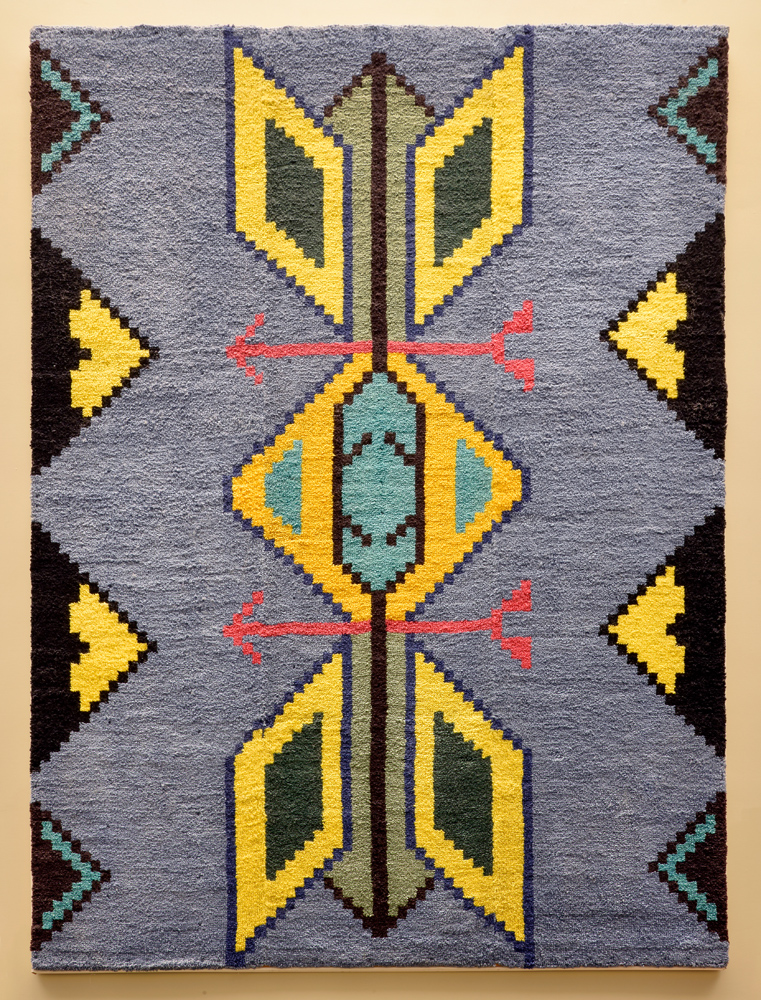(1896-?)
Located in LY 107 (above Help Desk, Dr. Archer Library 1st floor)

© the Estate of Martha Tawiyaka. Reproduced with the permission of Vincent Rider. Photograph by the University of Regina.
Tapestry (Tah-hah-sheena), c. 1970
Wool
144″ x 60″
University of Regina President’s Art Collection; pc.1971.4
A member of the short-lived but successful Sioux Handcraft Co-operative, Martha Tawiyaka was one of the oldest women on the Standing Buffalo reserve (near Fort Qu’Appelle) at the time this work was made. Born around 1896, she lived to be over 100 years old. She recalled a time in her youth when “the lake here used to be clear and sweet-smelling the year round. Now it is green and smells bad all summer. We used to drink from the lake when I was young.” Tawiyaka was a midwife and a medicine woman. She was also a Roman Catholic until she was encouraged to attend the Evangelical Church that came to the Fort Qu’Appelle area in about 1964. At the time she joined the Evangelical Church, Tawiyaka buried her medicines and announced, “No more Indian ways!”
Tawiyaka’s friend Lorna Ferguson, whose husband was the regional supervisor of education of the Fort Qu’Appelle area in the mid 1960s, admired the women’s beadwork and presented the idea of adapting the designs for rug-making. Women of the reserve had previous experience making rugs, but had not been using Sioux designs. The idea was met with enthusiasm and the Sioux Handcraft Co-operative was founded. Tawiyaka was hired as a consultant to teach the designs to workshop participants. Workshops taught members of the co-operative modern rug-making techniques with yarn, burlap, and a rug-hooking tool called a latchet.
The rugs were named Tah-hah-sheena, a Sioux word used to describe decorated animal hides worn during ceremony and social gatherings. When not in ceremonial use, the hides were hung inside tipis providing additional insulation and aesthetic adornment. Some rug designs tell stories and have spiritual connections, while others are simply designed to please the taste of the artist. The rugs embody the courage, strength, wisdom, pain, and determination of the people.


